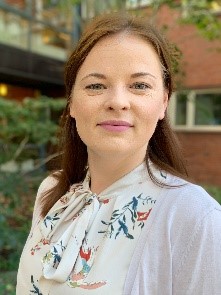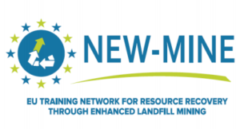No previous studies on excavated waste pyrolysis and the characterisation of the process products have been identified in the open, available literature. Therefore, KTH researchers performed the pyrolysis of excavated waste in a lab-scale reactor. This work was published in the Journal of Cleaner Production.
Motivation
The lion's share of recent feasibility assessments of landfill mining projects focusses on incineration as currently the most effective technology to recover energy from excavated waste.
On the horizon, however, are changes in the waste management and energy sectors. This is due to the increasing attention for implementing the principles of the circular economy. This allows room for people to start considering alternative waste-to-energy technologies, such as pyrolysis.
The Enhanced Landfill Mining (ELFM) concept is still developing, and therefore there are several knowledge gaps related to it. As an example, little research on the pyrolysis of excavated material has been done to date, even though pyrolysis itself is well-known for tens of years.
Therefore, the performed pyrolysis experiments contributed to filling this knowledge gap, and, even more importantly, contributed to filling one of the black boxes still existing within the ELFM concept, by providing required input data for generating meaningful feasibility simulation results.
The experiments
The material used within the study was excavated from the oldest part of a landfill located in Mont-Saint-Guibert (Belgium). The material was sorted prior to pyrolysis, and the light fraction (90-200 mm) was selected for the tests due to its high calorific value and relatively low content of impurities.
The pyrolysis was performed at temperatures in the range of 400-700°C in a lab-scale reactor. The process products (char, condensable volatiles (condensables) and non-condensable volatiles, also referred to as permanent gas) were afterwards characterised in terms of their composition.
Conclusions and future perspectives
The heterogonous composition of the feedstock is reflected in the heterogonous composition of the pyrolysis products. Nevertheless, some common denominators for the product's characteristics at different process temperatures can be found.
First of all, the permanent gas is characterised by a high gross calorific value at all of the analysed temperatures due to high hydrocarbons content. However, its yield (mass and volume) is relatively low, and, therefore, its utilisation has to be subjected to further economic analyses.
Second, the complex composition of the condensables and the presence of unfavourable compounds exclude their utilisation as a source of chemicals or bio-oil. Notwithstanding that, they show the potential for catalytic upgrading to fuels or high-quality syngas. This process, however, needs further research due to possible risks connected with the sulphur and chlorine distribution among the process products.
Last but not least, in the case of char, the high ash content (77-85 wt%), and, consequently, low calorific value, suggests low profitability of its energy use. Therefore, other ways of char utilisations shall be investigated in future research.
To sum up, the study reveals both possibilities and risks connected with the pyrolysis of excavated waste. As such, it constitutes a starting point for further research on the possible ways of upgrading and utilising process products.
Full reference to the paper
Katarzyna Jagodzińska, Ilman Nuran Zaini, Rikard Svanberg, Weihong Yang, Pär Göran Jönsson, Pyrolysis of excavated waste from landfill mining: Characterisation of the process products, J. Clean. Prod., 2021, 279, 123541. DOI: https://doi.org/10.1016/j.jclepro.2020.123541
Biography lead author
 Katarzyna Jagodzińska is an early-stage researcher realising her PhD studies at KTH within NEW-MINE project. She graduated in Environmental Protection in Power Engineering (B.Eng.) in 2013, Mechanical Engineering (B.Eng.) in 2014, and Mechanical Engineering (M.Eng.) in 2015 at the Silesian University of Technology, Poland. Other papers by Katarzyna Jagodzińska can be found here.
Katarzyna Jagodzińska is an early-stage researcher realising her PhD studies at KTH within NEW-MINE project. She graduated in Environmental Protection in Power Engineering (B.Eng.) in 2013, Mechanical Engineering (B.Eng.) in 2014, and Mechanical Engineering (M.Eng.) in 2015 at the Silesian University of Technology, Poland. Other papers by Katarzyna Jagodzińska can be found here.
Acknowledgements
.jpg) The research is part of the MSCA-ETN NEW-MINE project which has received funding from the European Union's Horizon 2020 research and innovation programme under the Marie Skłodowska-Curie grant agreement No 721185 – EU Training Network for Resource Recovery through Enhanced Landfill Mining (NEW-MINE).
The research is part of the MSCA-ETN NEW-MINE project which has received funding from the European Union's Horizon 2020 research and innovation programme under the Marie Skłodowska-Curie grant agreement No 721185 – EU Training Network for Resource Recovery through Enhanced Landfill Mining (NEW-MINE).


